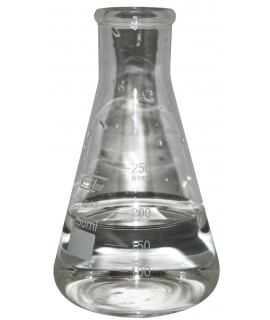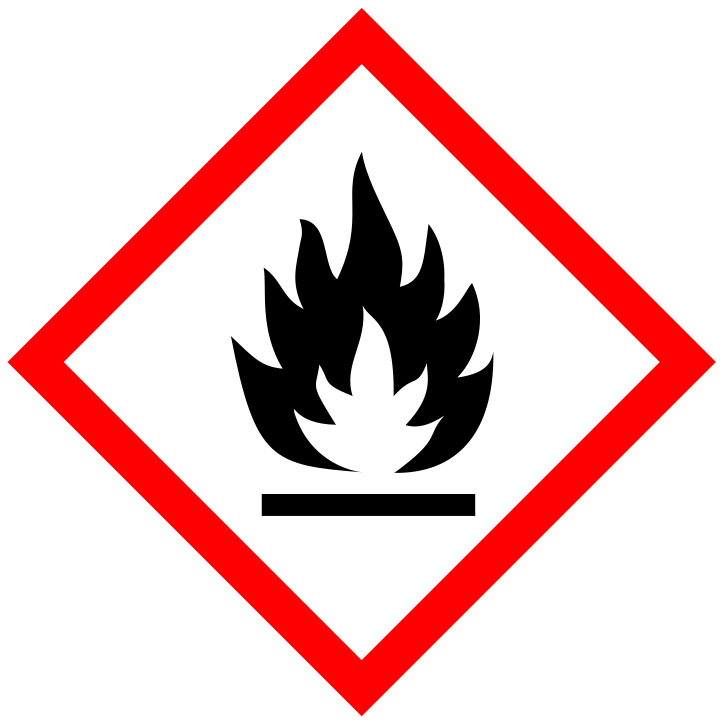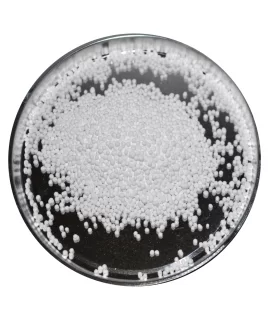TETRAHYDROFURAN (THF), 99%, L
11.00 €
Tetrahydrofuran, CAS 109-99-9, THF, 1,4-Butylene oxide, cyclotetramethylene oxide, furanidine, oxolane
Parameter | Attribute |
Tetrahydrofuran | Tetrahydrofuran, THF, 1,4-Butylene oxide, Cyclotetramethylene oxide fraction, Furanidin, Tetra-methylene oxide, Oxolane |
Formula | C4H8O |
Structure |   |
IUPAC | 1,4-Epoxybutane 1-Oxacyclopentane |
INCI | - |
CAS | 109-99-9 |
Molar mass | 72.107 g/mol |
Density | 0.8876 g/cm3 |
Solubility | Fully miscible |
Tetrahydrofuran (THF) or oxolane is an organic compound with the formula (CH2)4O. This compound is classified as a heterocyclic compound, in particular cyclic ethers. It is a colorless organic liquid, miscible with water and has a low viscosity. It is mainly used as a precursor for polymers. As a polar compound with a wide range of solvating fluids, THF is a versatile solvent.
Solvent use: THF is used as an industrial solvent for polyvinyl chloride (PVC) and varnishes. It is an aprotic solvent with a dielectric permittivity of 7,6. It is a moderately polar solvent and can dissolve a wide range of non-polar and polar chemical compounds. THF is miscible with water and can form solid clathrate hydrate structures at low temperatures with water. An aqueous solution of THF increases the hydrolysis of biomass glycans and dissolves most of the biomass lignin, making it a suitable solvent for biomass pretreatment. THF is often used in polymer science to dissolve polymers prior to their molecular weight determination by gel chromatography. THF is also soluble in PVC and is therefore a key component of PVC adhesives. It can be used to liquefy old PVC cement and is often used in industry to degrease metal parts. THF is used as a mobile phase constituent in reversed-phase liquid chromatography. It has a higher elution strength than methanol or acetonitrile. THF is used as a solvent in 3D printing using PLA plastic. It can be used to clean clogged parts of the 3D printer, as well as in the finishing of prints to remove extruder lines and to add gloss to the final product. More recently, THF has been used as an additional solvent in lithium and metal batteries to help stabilize the metal anode.
In laboratories, THF is a popular solvent as its miscibility with water is not a problem. It is more basic than diethyl ether and forms stronger complexes with Li+, Mg2+ and boranes. It is a popular solvent for hydroboration reactions and organometallic compounds such as organolith and Grignard reagents. Thus, while diethyl ether remains the solvent of choice for some reactions (e.g. Grignard reactions), THF plays this role in many others where strong coordination is desirable, and the precise properties of such ether solvents (individually and in mixtures, and at different temperatures) allow for fine tuning of chemical reactions. Commercial THF contains a large amount of water, which must be removed in sensitive operations such as those involving organometallic compounds. Molecular sieves are used to extract anhydrous THF and are better water removers than analogous processes. One of the hazards of THF is its tendency to react with air to form the explosive compound 2-hydroperoxytetrahydrofuran. To reduce this problem, commercial THF products are often stabilized with butylated hydroxytoluene (BHT). It is unsafe to distil THF to a dry state as the residue may accumulate explosive peroxides.
In the cleaning industry, THF is used as a particularly strong solvent for organic compounds and is therefore an excellent solvent for the removal of residues of grease, lubricants and organic soils. It is also used as an ingredient in plastic or adhesive residue cleaners.
In the construction industry, THF is used as an ingredient in various sealants, silicones and adhesives, allowing these products to remain in a liquid state. When applied to a surface, THF evaporates and the sealant becomes hard and sticks to the surface.
In industry it is also used as a reaction medium, mainly in the pharmaceutical industry, in processes such as Grignard synthesis or lithium aluminum hydride reduction. Examples of Grignard synthesis are butyrolactone and succinic acid. It is also used as a Grignard reagent in the synthesis of synthetic perfumes, pharmaceuticals, motor fuels and insecticides. Tetrahydrofuran is a valuable chemical intermediate because it is a precursor to polymers such as poly(tetramethylene ether) glycol. The main use of this polymer is in the production of elastomeric polyurethane fibers. It is also an intermediate in the natural gas industry where it is a natural gas flavoring agent. In other industries, this polymer is used as an intermediate, excipient and plasticizer.
Important: Add the item to your basket, fill in the recipient's details and confirm your order. Thank you!
To save your precious time, we will deliver your order to your address at a time convenient for You!
*- Pictures of the goods may not reflect the actual appearance, color, assembly or shape of the goods and their packaging. The information in the product description is general and may not correspond to the information on the packaging of the product and may not be accurate as to the use of the product. The information given on the stocks and prices of goods may, in certain cases, differ from the actual prices and stocks of goods
Signal word: Danger |
Hazard icons:
|
Danger phrases: H225 Highly flammable liquid and vapor H302 Harmful if swallowed H319 Causes severe eye irritation H335 May cause respiratory irritation H336 May cause drowsiness or dizziness H351 Suspected of causing cancer |
Precautionary statements: Precautionary phrases - preventive P210 Keep away from heat sources, hot surfaces, sparks, naked flames or other sources of combustion. No smoking P280 Wear protective clothing/use eye/face protection Precautionary statements - rebound P305+P351+P338 In case of contact with eyes: wash gently with water for several minutes. Remove contact lenses contact lenses, if present and if easy to do so. Continue to wash eyes P308+P313 In case of contact or suspected contact: seek medical advice Precautionary statements - storage P403+P233 Store in a well-ventilated place. Keep container tightly closed For professional users only Additional hazard information EUH019 May form explosive peroxides. |
Related products
(8 other products in the same category)













